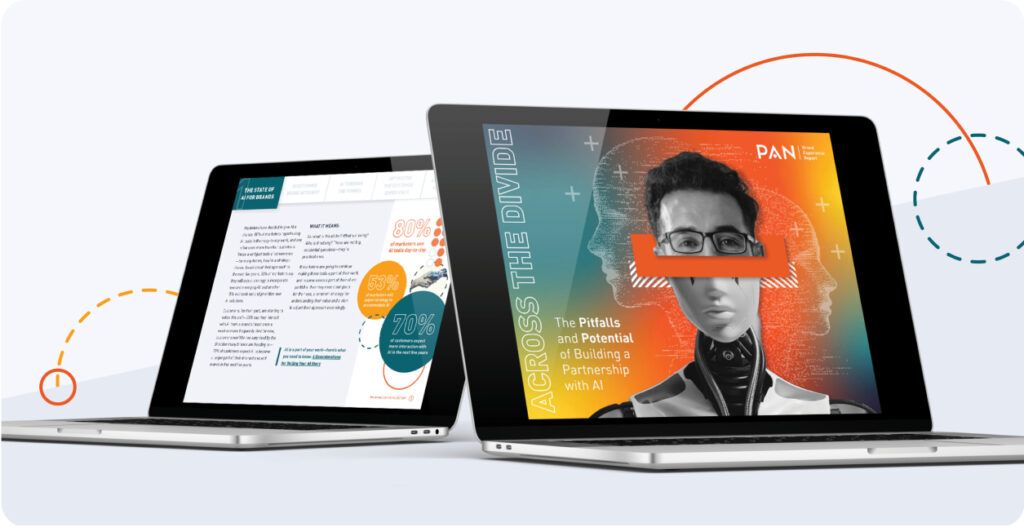Spotlight on Syracuse Student, Lacee Harper: Syracuse University and PAN Communications continue to partner and support the growth of the PR industry. President and CEO of PAN Communications, Phil Nardone, has been an adjunct professor at the Newhouse School’s public relations department for more than 15 years. The PANportal is an ePortfolio program to support Syracuse students in preparing for their first PR job. Now, PAN is proud to feature the following Syracuse student guest blog post:
Social listening is a form of business intelligence that helps businesses closely monitor the conversations and sentiment of core audiences across social platforms. It’s a critical tool that can inform real-time decision making and brand awareness strategies – a need in today’s digital landscape. But what is the catch to tracking, analyzing and responding to online conversations about your brand or industry?
Let’s dive a little deeper into what brings social listening to life. Hootsuite defines it as the process of monitoring social media channels for mentions of your brand, competitors and other ideas that are relevant to your business. The difference between social listening and traditional monitoring is the role of data. The sentiment analysis informs a direct action, as opposed to simple collection of posts, likes and behaviors online. Powered by data, social listening offers insight in a much more active way.
As a metric, social media listening helps to measure the tone of a conversation about your brand or industry. If the sentiment is positive, your brand will know if a campaign or product was well-received by its audience. Trends will develop which assists a company with learning what works and what doesn’t.

Source: pexels.com under CC license
Social listening will help you improve your business and promote better customer service. You will form a relationship with your audience and understand how they feel about your brand, competitors, and industry.

Here are some reasons why:
Improve your consumer engagement
A brand can never know too much about its customers. It’s important to stay ahead of changing customer sentiment and expectations. Today, customers want to engage and learn, and social is a powerful way to foster that connection. In fact, according to Sprout Social Index 2017 report on ‘The Cost of Being Cool’, 75 percent of consumers believe there is value in bands exhibiting humor on social while only 35 percent are willing to purchase from brands that they think are funny. Brands that humanize on social media are valued. Giving the customer a reason to interact with a brand helps maintain loyalty to the company, which is possible through social media listening.
Keep track of what is winning and what isn’t
Sometimes, brands face backlash as a result of an “edgy” post. Social listening allows brands to gauge responses at a granular level, so they can gain a sense of what went wrong. Tools such as Google Alerts, BuzzSumo, Hootsuite, and PeopleBrowsr assist with this type of analysis. Cisco, for example, uses its social media channels (Facebook, Twitter, YouTube) to promote its products. In 2010, Cisco launched a new router that cut six figures off of its launch expenses just by using its social media channels alone. According to La Sandra Bill, global social media senior manager at Cisco, “it was one of the top five launches in the company’s history”. Moving forward, Cisco continued to use its social media channels to launch its products. Positive trends like these are what helps a company to identify its progress and the elements needed to push its future ideas or efforts.
Find new opportunities and how your brand is perceived compared to others
Social listening informs a brand of its audience needs, but it’s equally important to track your competitor’s insights. Comparing and contrasting two companies can allow you to discover what needs to change within your company’s marketing strategy. Monitoring what the competitor is saying about their brand, the volume of share of voice, and how to respond to the public on social media can help a brand reach success.
Discover the influencer that helps express your brand’s personality
Brand advocates and influencer marketing are powerful ways to attract consumers to interact with your brand. If a consumer agrees with the influencer’s views, image or social media presence the consumer will most likely support your brand. Customers and prospects are more likely to trust recommendations from popular media personalities and third-party sources. It is all about knowing how to pick an influencer that matches your brand so that you can eventually benefit from additional media exposure.
Learn more about discovering influencers: The Value of Influencers on Twitter
Find out how to enhance your company’s content: How to Make Your Content POP in Social Newsfeeds
###

Lacee Harper is a graduate student at Syracuse University majoring in public relations. Lacee’s interests include international branding, fashion, entertainment, and foreign affairs. She is currently an intern for Make-A-Wish Central New York. Contact Lacee by email: lcharper@syr.edu.





